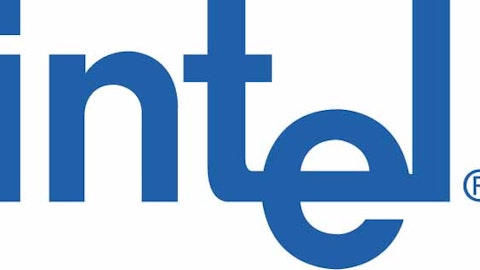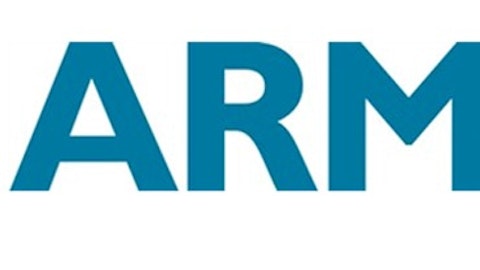
Reason No. 1
It might be old news, but its benefits are just beginning to show up. NVIDIA Corporation (NASDAQ:NVDA) was known to spearhead the graphical capabilities of Sony’s Playstation 3, while Advanced Micro Devices, Inc. (NYSE:AMD) powered up Microsoft’s Xbox 360 with its Xenos GPU. But earlier this year, NVIDIA Corporation (NASDAQ:NVDA) backed out of powering up the Playstation 4.
Nvidia doesn’t release information regarding its Playstation 3 margins, so it is hard to pinpoint its lost opportunity cost. But analysts estimate that Nvidia will miss out around $120million-$150 million in 2014 revenues. According to its management, the tie up with Sony made it explicitly clear that the graphics architecture used in the Playstation, can’t be used by Nvidia in its own products. So, in order to grow beyond the world of consoles, NVIDIA Corporation (NASDAQ:NVDA)’s top brass saw it fit to opt out of the Playstation 4.
And thus, Advanced Micro Devices, Inc. (NYSE:AMD) was roped in by Sony to power its console.
This is a huge achievement for AMD, as most of the developers will now tweak their game engines for AMD’s devices. As a matter of fact, AMD has struck a deal with Electronic Arts, in which the latter will optimize all of its Frostbite 3 titles, along with Battlefield 4, for AMD’s architecture.
If other developers follow suit, we would be able to witness higher frames per second, or FPS, rates across several game titles, without a major change in Advanced Micro Devices, Inc. (NYSE:AMD)’s graphical architecture. This will certainly result in better benchmarks, and gamers will obviously feel compelled to buy AMD powered GPUs.
Reason No. 2
But that was just hindsight. Advanced Micro Devices, Inc. (NYSE:AMD) is planning to unveil its next generation of graphics cards next year, which will come equipped with GDDR6 memory. According to estimates, the shift from the current GDDR5 memory to GDDR6 will double the memory bandwidth. This would be a similar performance boost as the shift from GDDR3 to GDDR5 had. This would certainly be a game changer for AMD.
This is because AMD has been the frontrunner in the development of GDDR standards. And the company is actively working with JEDEC group to pursue the rapid development and deployment of GDDR6 memory standards. However, Nvidia is yet to make an announcement regarding the development of its GDDR6 modules.
According to a couple of speculative reports, AMD will be unveiling its GDDR6 equipped GPUs in early 2014, and will be ahead of Nvidia by atleast 6 months. Since Advanced Micro Devices, Inc. (NYSE:AMD) has always priced its GPUs on a relatively better “Dollar/Performance” ratio, the company will most likely introduce reasonable pricing for its next gen GPUs.
With a low switching cost and practically no competition for a few months, gamers will (again) feel compelled to buy AMD powered GPUs. But that’s not the end of it.
Reason No. 3
An introduction of GDDR6 will also allow AMD to further extend its lead against Intel Corporation (NASDAQ:INTC)’s integrated graphics. Intel Corporation (NASDAQ:INTC) is a vertically integrated company, and develops most of its technology on its own. But GDDR6 standards are being developed by AMD, and Intel will have to model it’s upcoming Broadwell processors based on AMD’s memory standards. This cross platform adoption would certainly take time to perfect, which should give Advanced Micro Devices, Inc. (NYSE:AMD) another headstart against its fiercest rival.
Besides that, Intel Corporation (NASDAQ:INTC) will most certainly have to remodel its die (14nm), to accommodate the new memory controllers. This could lead to roadblocks, and even trade-offs between CPU performance boost and GPU performance boost. But since AMD is developing GDDR6 standards around its own platform, it will most probably be able to pack in a sizeable processing and (integrated) graphical performance boost compared to its previous generation of processors.
But then again, one cannot estimate the financial benefits here. AMD is coming out ahead, but the early adoption of GDDR6 will depend on its performance gains at low voltages.
Final words
I am not an AMD fanboy and have never owned any Advanced Micro Devices, Inc. (NYSE:AMD) powered product in my life. But I’m inclined to say that AMD could be staging its turnaround. AMD’s Trinity is already faster than Intel’s Ivybridge (graphics wise), and its venture into the next gen memory standards, could further extend its lead. Its proactive approach in the field gaming consoles and GDDR6 memory, seem to be turning it into a well rounded company, and I believe that it will benefit AMD over the next couple of years.
The article 3 Reasons Why AMD Could Turn Around originally appeared on Fool.com and is written by Piyush Arora.
Piyush Arora has no position in any stocks mentioned. The Motley Fool recommends Intel and NVIDIA. The Motley Fool owns shares of Intel. Piyush is a member of The Motley Fool Blog Network — entries represent the personal opinion of the blogger and are not formally edited.
Copyright © 1995 – 2013 The Motley Fool, LLC. All rights reserved. The Motley Fool has a disclosure policy.





